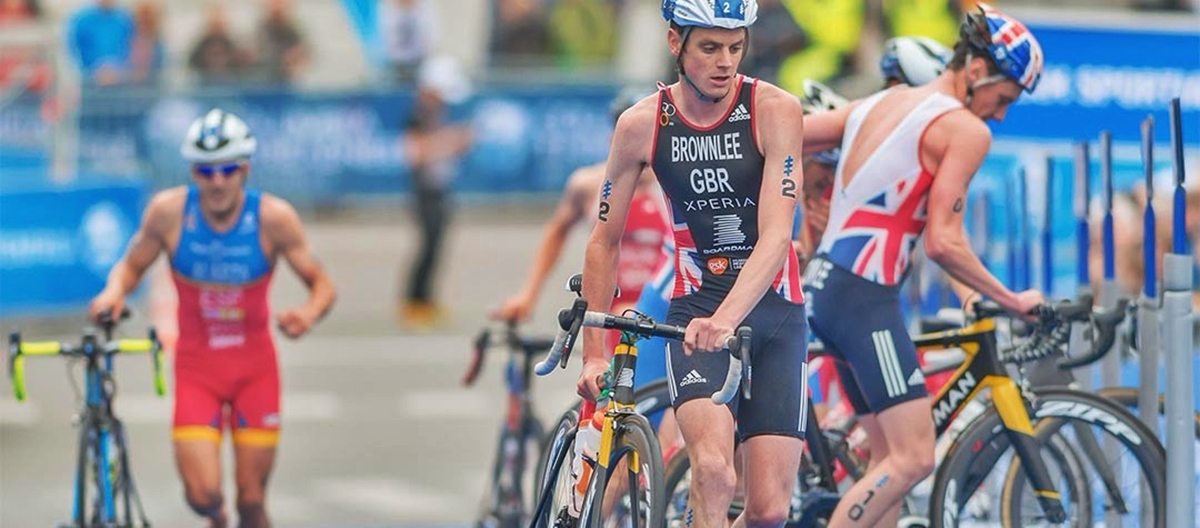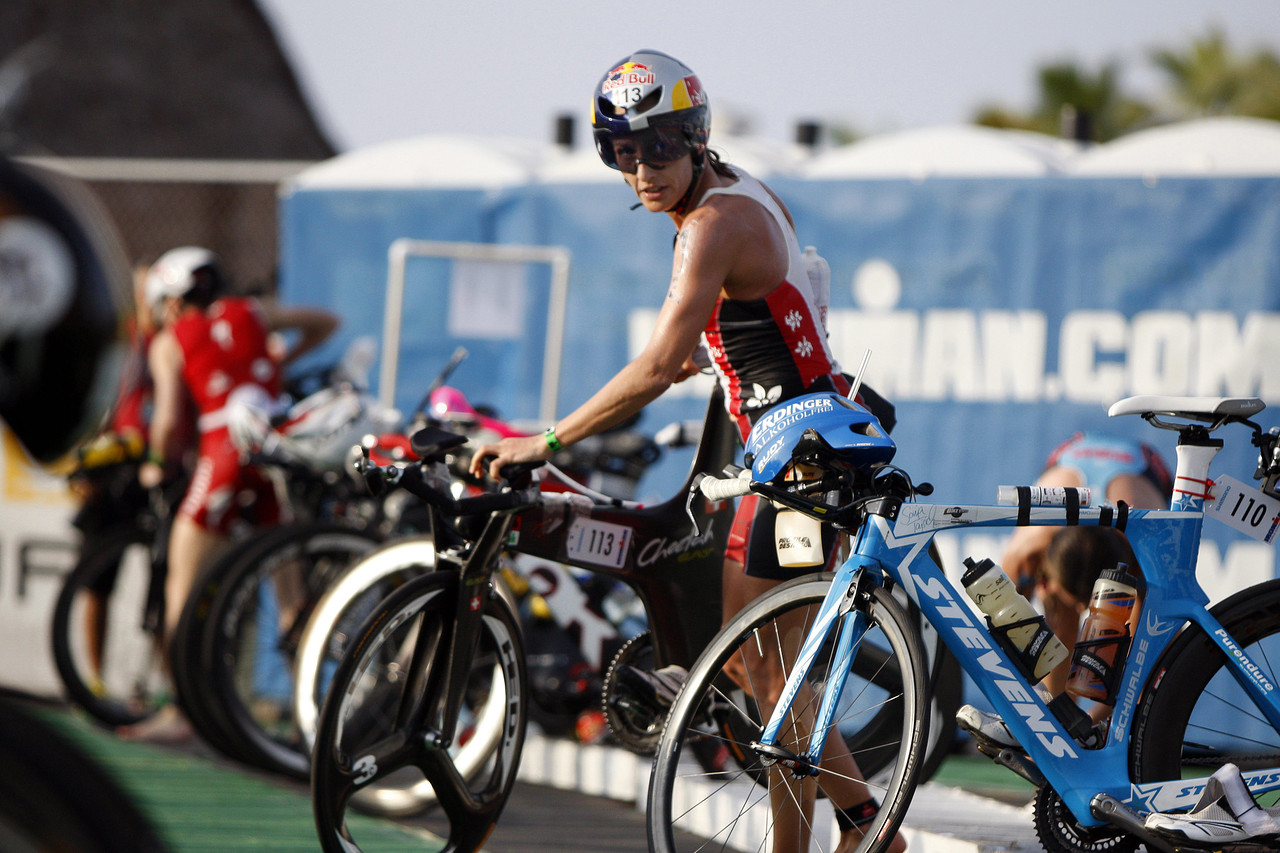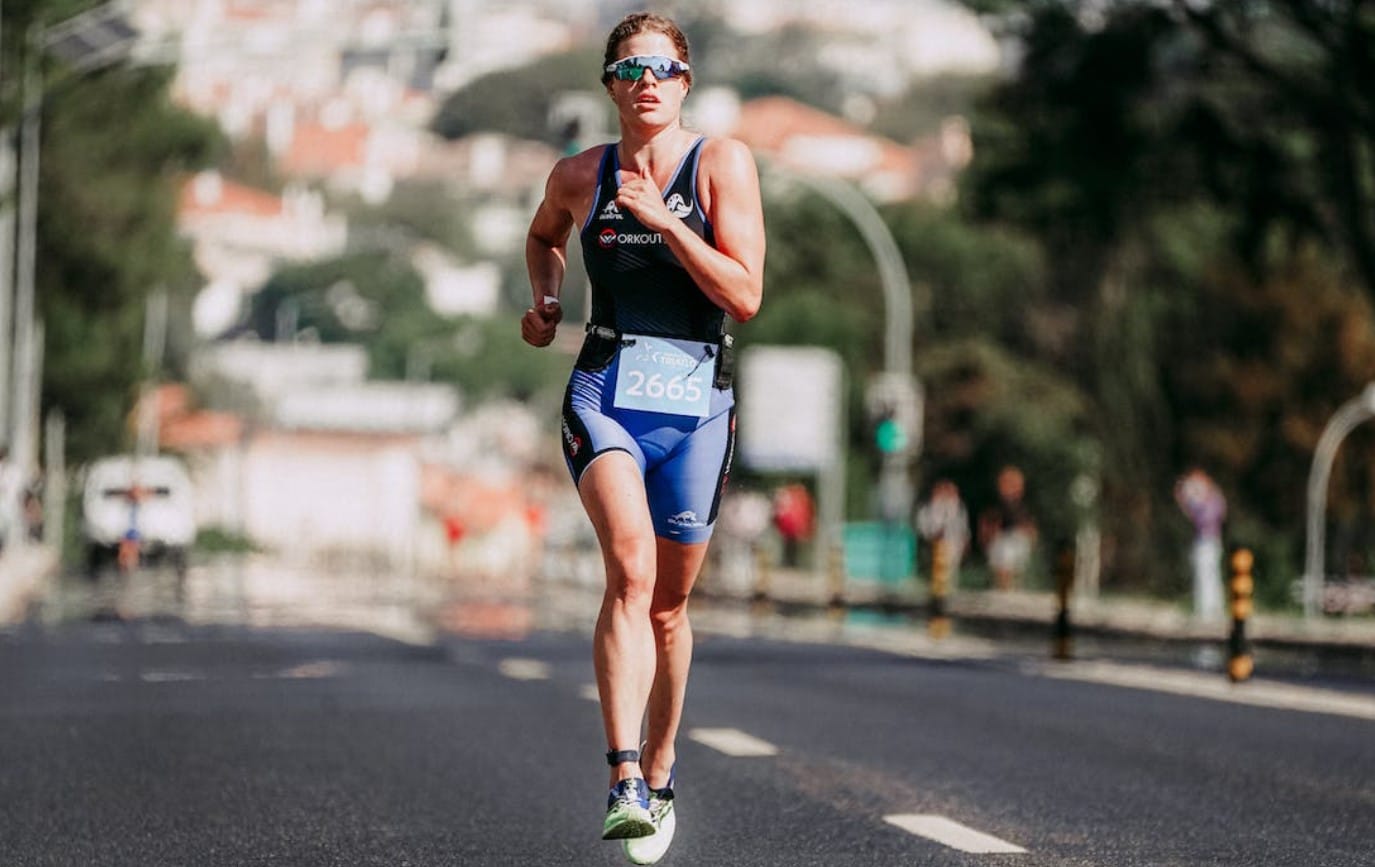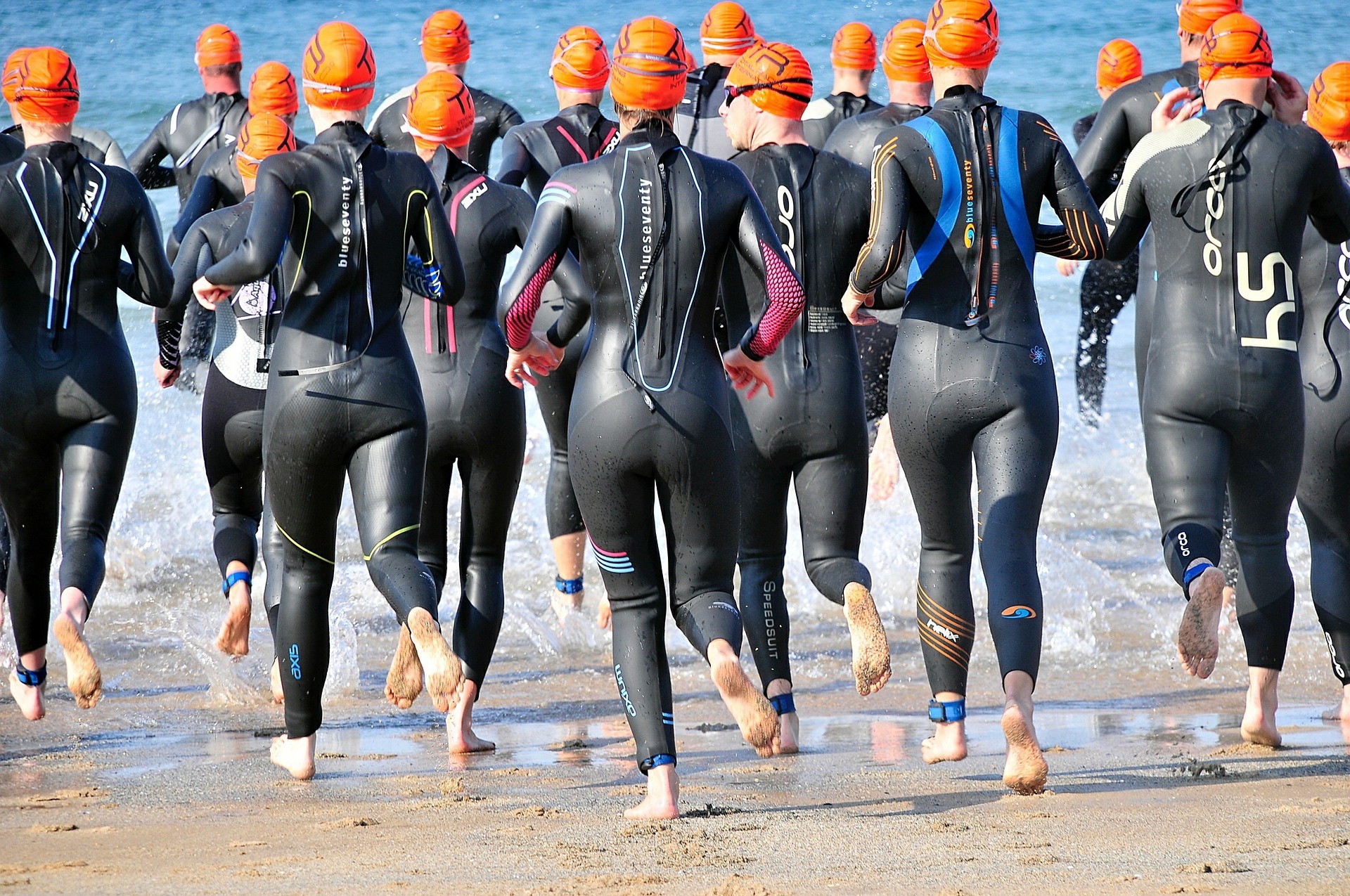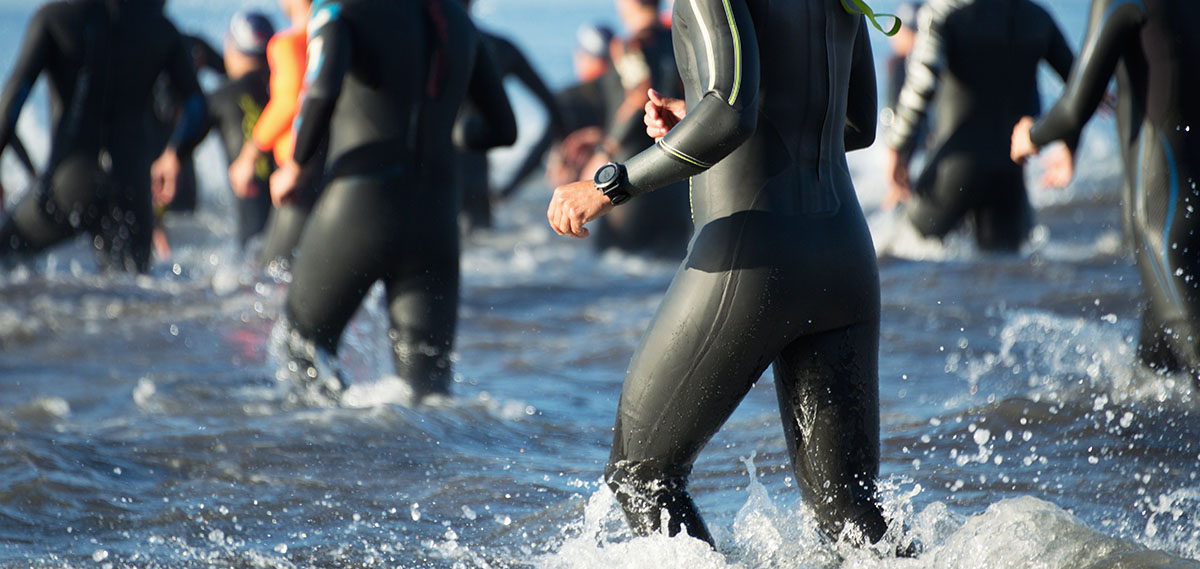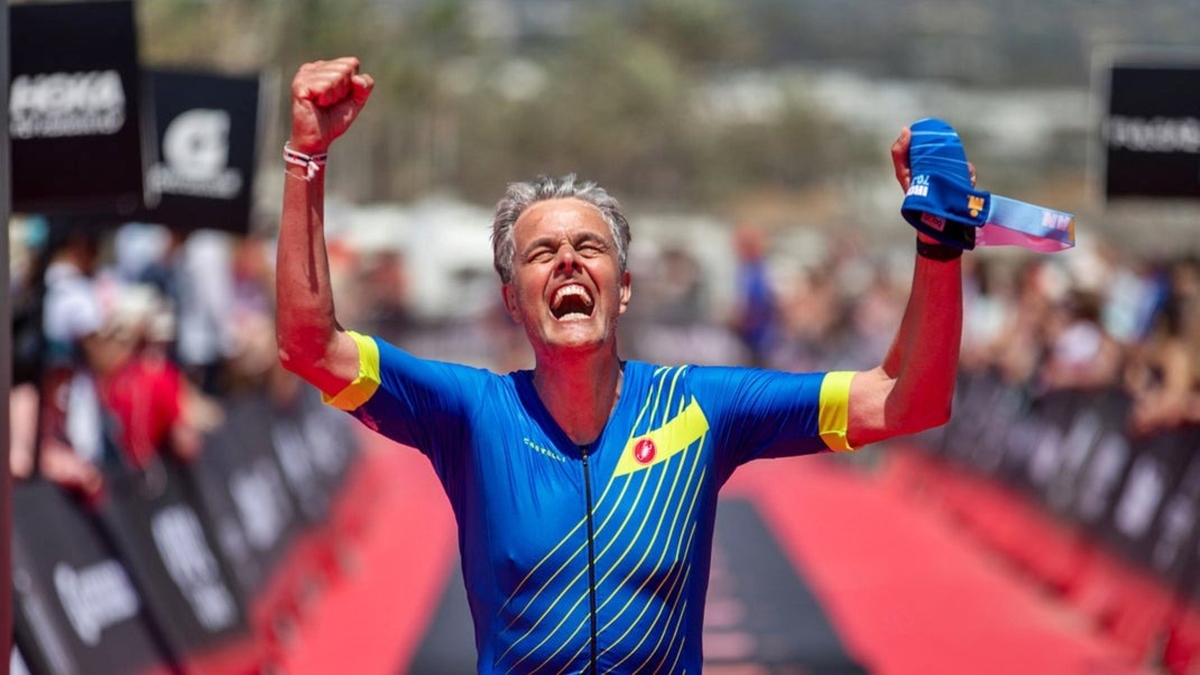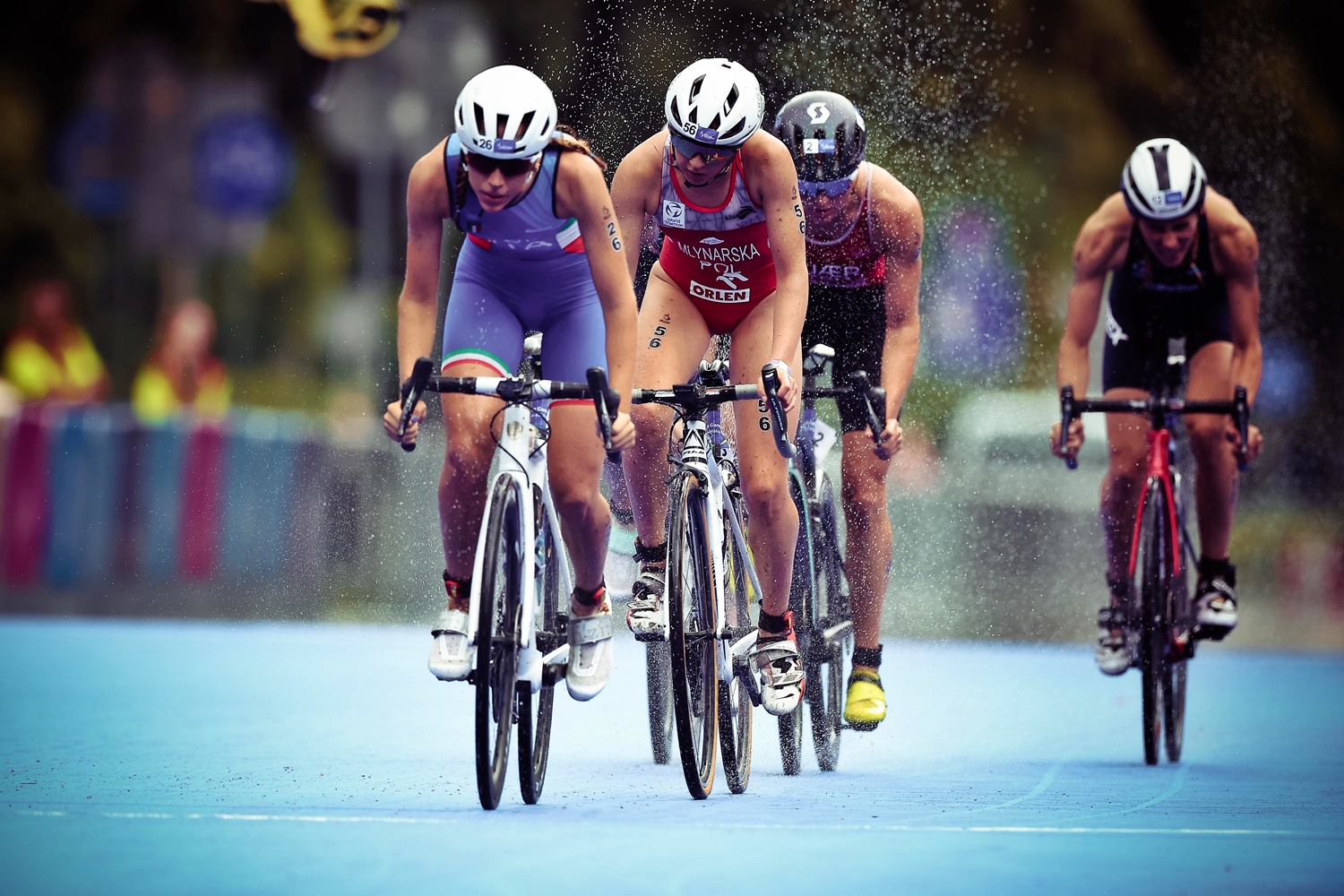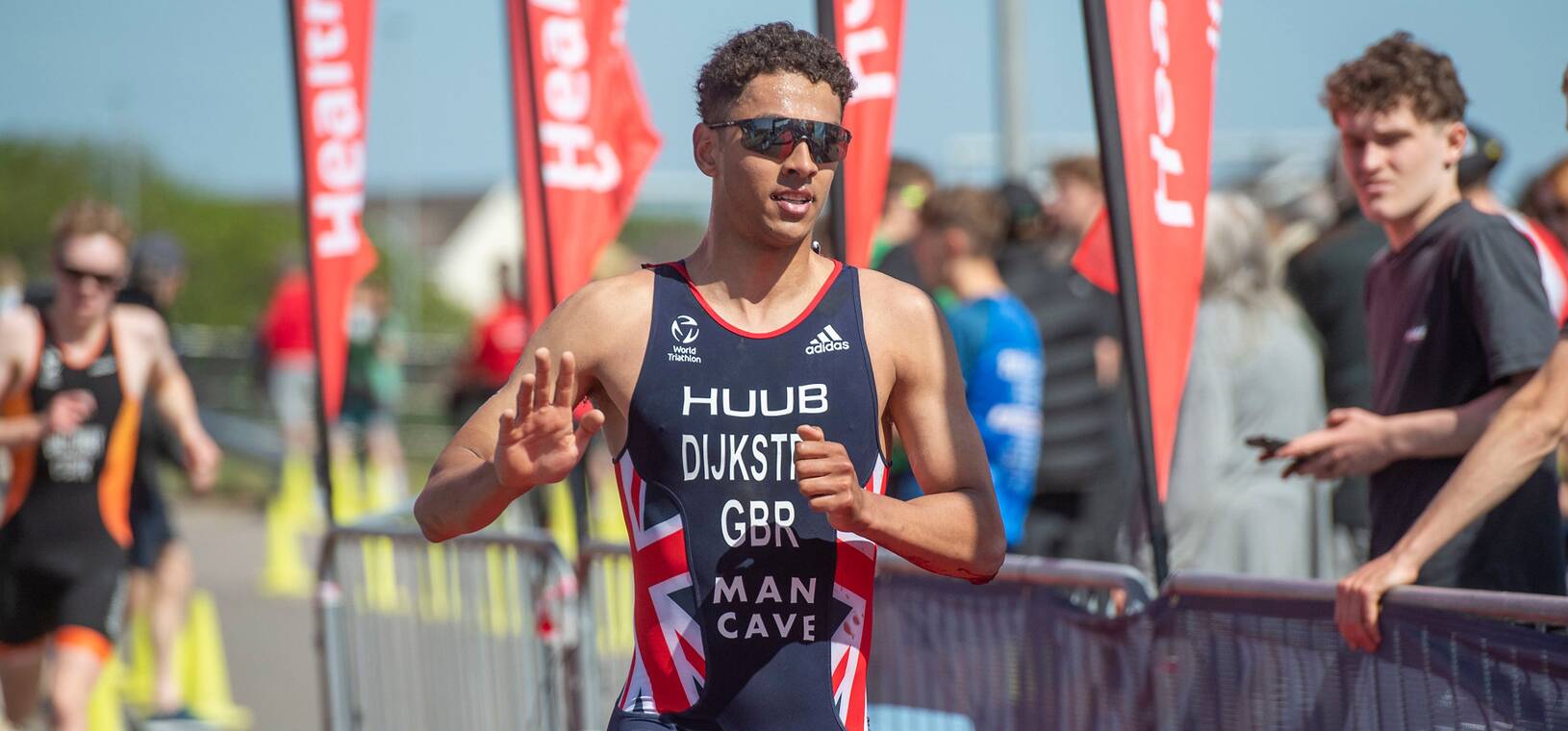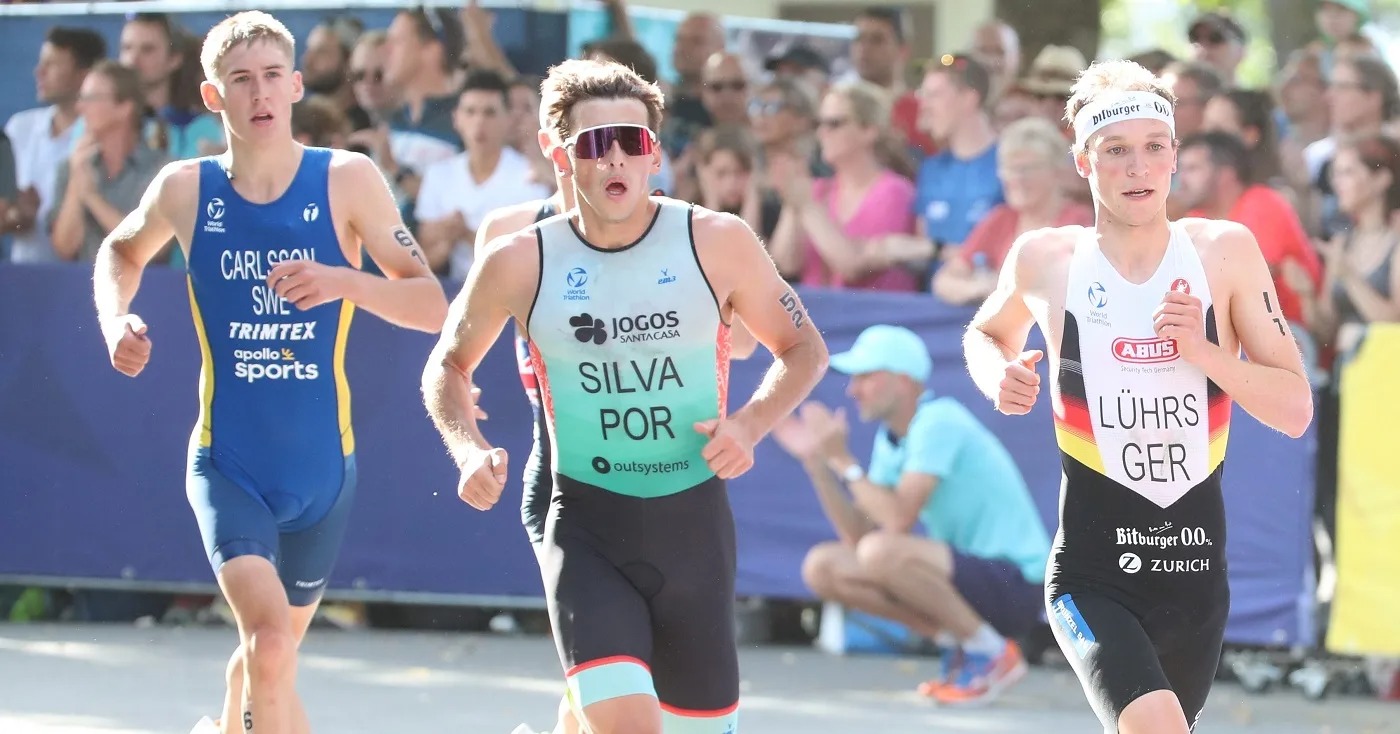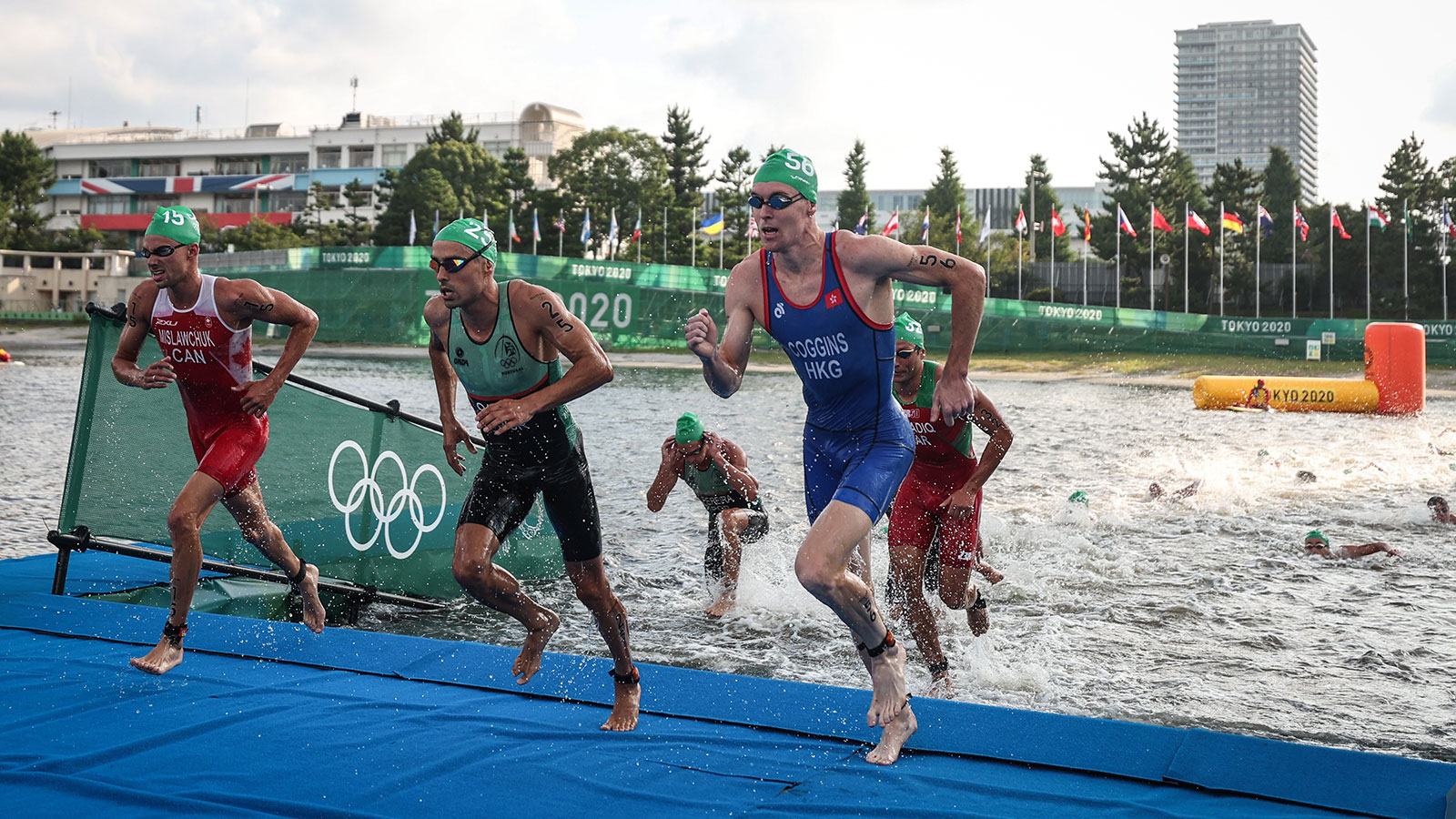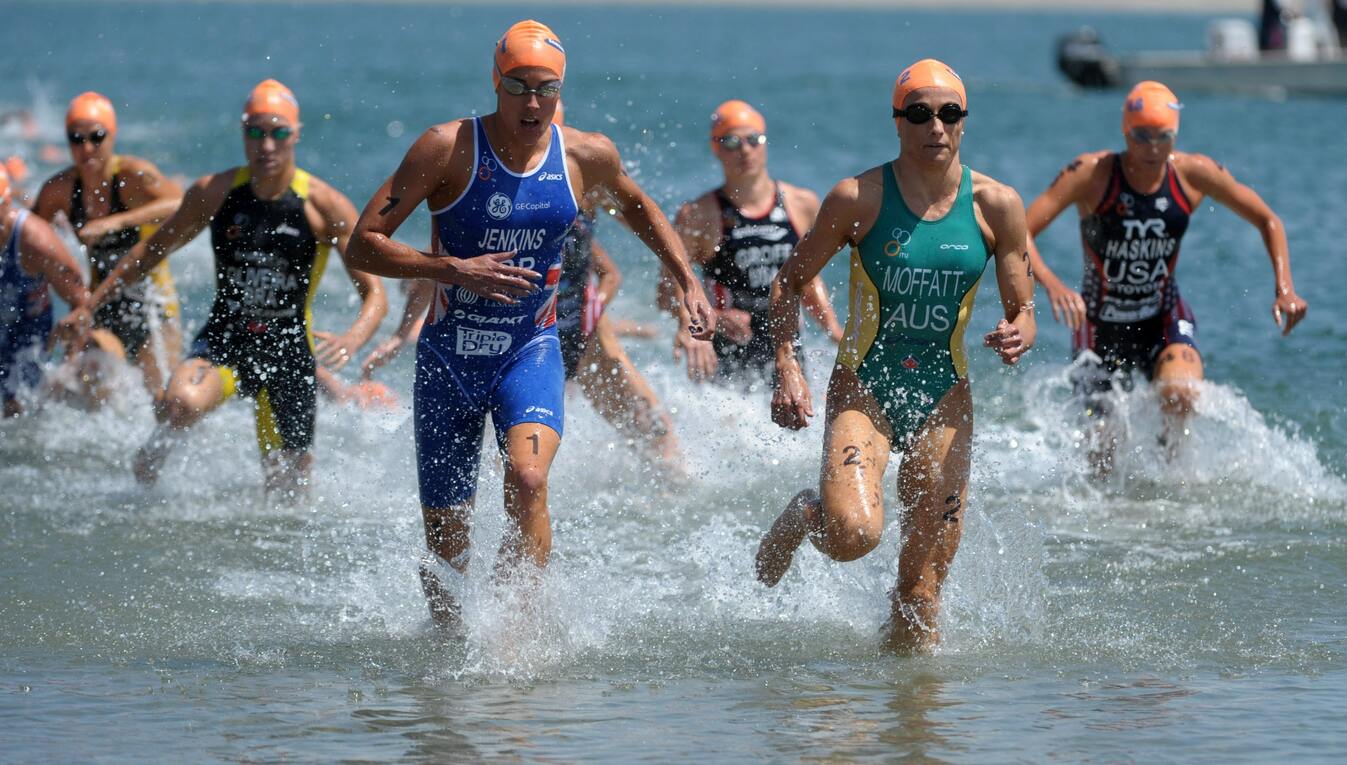

Featured
What To Wear In Triathlon
Modified: August 22, 2023
Looking for featured clothing options for your upcoming triathlon? Check out our guide on what to wear in a triathlon to ensure maximum comfort and performance.
Introduction
Welcome to the world of triathlon! If you’ve decided to take on this ultimate multi-sport challenge, you’re in for an exciting journey. Triathlon combines swimming, cycling, and running into one exhilarating event that tests your endurance, strength, and mental toughness.
As you embark on your triathlon training, one of the key considerations is choosing the right clothing. Your attire can greatly impact your performance and overall comfort throughout each leg of the race. Whether you’re a seasoned triathlete or a newbie, selecting the appropriate gear is essential to optimize your performance and make the most out of your triathlon experience.
This article will guide you through the various stages of a triathlon – swim, bike, run, and transition – and provide insights on the kind of clothing that works best for each stage. We will also explore the essential accessories and gear that can make a difference in your performance. So, let’s dive in and discover what to wear in a triathlon!
Choosing the Right Triathlon Clothing
When it comes to triathlon, comfort and functionality are key. The right clothing can make a significant difference in your performance and overall experience during the race. Here are some factors to consider when selecting your triathlon clothing:
1. Triathlon-specific Apparel
Invest in triathlon-specific apparel designed to cater to the unique needs of the sport. Tri suits, for example, are one-piece garments that provide optimal aerodynamics and flexibility for all three disciplines. They are made from quick-drying materials that wick away moisture and minimize chafing.
2. Proper Fit
Ensure that your triathlon clothing fits properly. Avoid anything too loose or too tight, as it can cause discomfort and hinder your movement. Opt for snug-fitting attire that allows for freedom of movement in the water, on the bike, and during the run.
3. Swim-Friendly Attire
For the swim portion, consider wearing a wetsuit if the water temperature allows. It provides buoyancy, improves body positioning, and helps you swim faster. Additionally, a swim cap and goggles are essential to protect your hair and eyes from water and enhance visibility.
4. Breathable Fabrics
Choose clothing made from breathable fabrics that wick away sweat and keep you cool and dry during intense workouts. Look for moisture-wicking materials such as nylon, spandex, or polyester blends that provide ventilation and prevent overheating.
5. Padding for the Bike
When it comes to the bike leg, consider wearing cycling shorts with built-in padding (chamois) for extra comfort during long rides. The padding helps reduce friction and prevents saddle sores. Pair them with a lightweight, moisture-wicking cycling jersey for added breathability.
6. Running Apparel
During the run, opt for lightweight, moisture-wicking clothing that allows for maximum movement. Consider compression socks or calf sleeves to improve circulation and reduce muscle fatigue.
Keep in mind that triathlons often take place in various weather conditions, so it’s important to have options for both warm and cold climates. Layering can help you adjust your attire based on the conditions. Don’t forget to train in the clothing you plan to wear on race day to ensure its comfort and functionality.
Swim
The swim leg of a triathlon is where you’ll need to be efficient in the water, so choosing the right attire is crucial. Here are some tips for what to wear during the swim:
1. Triathlon-specific Swimwear
Invest in a triathlon-specific swimsuit or tri suit made of quick-drying and chlorine-resistant materials. These suits are designed to reduce drag and provide optimal hydrodynamics in the water. They often come with additional features like built-in bras for extra support.
2. Wetsuit
If the water temperature is below a certain threshold, wearing a wetsuit is essential. Not only does it keep you warm, but it also provides buoyancy, helping you stay on the surface and glide through the water with less effort. Choose a wetsuit that fits snugly and allows for freedom of movement in the arms and shoulders.
3. Swim Cap and Goggles
A swim cap is not only helpful for keeping your hair out of your face but also adds a layer of protection and makes you more visible to other swimmers. Goggles are a must to protect your eyes from chlorine and to help you see clearly underwater.
4. Body Glide
To prevent chafing and irritation caused by prolonged exposure to water and friction, apply a generous amount of body glide or petroleum jelly to areas prone to rubbing, such as the neck, armpits, and thighs.
5. Practice Open Water Swims
If the triathlon takes place in open water, it’s essential to practice swimming in similar conditions before the race. This will help you become comfortable with sighting, navigating, and swimming in a non-pool environment.
Remember to check the race guidelines regarding swim attire. Some races may have specific rules regarding wetsuits, swim caps, or other gear. By choosing the right swim gear and practicing in open water, you’ll be well-prepared for the swim leg of your triathlon.
Bike
The bike leg of a triathlon requires comfort, aerodynamics, and efficiency. Here are some key considerations for your bike attire:
1. Cycling Shorts
Invest in a good pair of cycling shorts with a built-in chamois (padding). The padding provides cushioning and reduces friction between you and the saddle, ensuring a more comfortable ride. Look for shorts made of moisture-wicking fabric to keep you dry during long rides.
2. Cycling Jersey
Pair your shorts with a lightweight, moisture-wicking cycling jersey. Look for one with a full or half zipper for ventilation options depending on the weather. Back pockets are useful for storing energy gels, snacks, a spare tube, or other essentials.
3. Base Layer
Consider wearing a base layer underneath your jersey to provide an extra layer of insulation in cooler temperatures. Look for one made of lightweight, breathable material that regulates body temperature and wicks away sweat.
4. Helmet
A helmet is non-negotiable for safety purposes. Choose a helmet that fits properly and meets safety standards. Look for features like proper ventilation, adjustable straps, and a visor to shield your eyes from the sun.
5. Cycling Shoes
Invest in a pair of cycling shoes that are compatible with your bike’s pedal system (clipless or toe cages). Cycling shoes improve power transfer and efficiency by allowing you to utilize the full pedal stroke. Don’t forget to practice cycling with your shoes before race day to ensure comfort and familiarity.
6. Socks
Wearing moisture-wicking socks can help prevent blisters and keep your feet dry during the bike leg. Look for socks that are breathable and provide cushioning in key areas.
Additionally, consider factors like weather conditions and race distance when choosing your bike attire. Layering is recommended for varying weather conditions, and longer races may require additional features like pockets for carrying nutrition and hydration.
By selecting the appropriate bike attire and ensuring proper fit and comfort, you’ll be ready to tackle the bike leg of your triathlon with confidence.
Run
The run leg of a triathlon is where you put your endurance and running skills to the test. Here are some tips to help you choose the right attire for the run:
1. Running Shorts or Tights
Opt for lightweight and breathable running shorts or tights that allow for a full range of movement. Look for moisture-wicking fabric to keep you dry and comfortable throughout the run. Choose a length and fit that you feel most comfortable in.
2. Moisture-Wicking Top
Choose a moisture-wicking top, such as a running singlet or lightweight t-shirt, to keep you dry and cool during the run. Consider factors like sleeve length and neck style based on your personal preference and the weather conditions on race day.
3. Compression Apparel
Consider wearing compression socks, calf sleeves, or compression shorts during the run. Compression gear can help enhance circulation, reduce muscle fatigue, and provide additional support to your legs.
4. Hat or Visor
A hat or visor can provide shade and protect your face from the sun during the run. Look for ones made from sweat-wicking materials to keep moisture away from your face and eyes.
5. Running Shoes
Choose a pair of lightweight, cushioned running shoes that provide ample support and comfort. Make sure your shoes are broken in and suited for your running style. Consider factors like stability, pronation support, and tread patterns based on your individual needs.
6. Sunglasses
Protect your eyes from the sun, wind, and debris by wearing sunglasses specifically designed for running. Look for lightweight, shatterproof options with UV protection.
Remember to consider the weather conditions and race distance when selecting your run attire. If temperatures are cooler, you may need to layer up or wear longer sleeves. Additionally, don’t forget to include essential accessories like a race bib belt, GPS watch, and hydration belt to meet your specific race needs.
By choosing the right run attire and gearing up with comfortable and supportive gear, you’ll be ready to conquer the final leg of your triathlon with confidence.
Transition
Transition is the period between each leg of the triathlon where you switch from one discipline to another. Here are some tips to optimize your transition area:
1. Transition Gear
Organize your transition area with the necessary gear for each leg of the race. Lay out your swim gear, bike gear, and run gear in separate piles or bags to make it easy to find and access what you need during each transition.
2. Towel
Place a small towel on the ground to stand on and act as a mat to dry off your feet and clean any sand or dirt from the swim. This will help keep your feet clean and prevent debris from getting into your socks and shoes.
3. Quick-Dry Clothes
Consider changing into a fresh pair of socks and a dry shirt or jersey if your swim attire is wet. Quick-drying clothes will help prevent discomfort and chafing during the bike and run legs.
4. Use Elastic Laces
If you’re using running shoes for the bike leg as well, replace your regular laces with elastic laces. Elastic laces allow for quick and easy slip-on and off, saving you precious time during transitions.
5. Nutrition and Hydration
Have your nutrition and hydration easily accessible in your transition area. Pre-prepare energy gels, bars, or hydration bottles and strategically place them where you can grab them quickly on the go.
6. Mental Preparation
During transition, take a few moments to mentally prepare for the next leg of the race. Visualize your strategy, focus on your goals, and mentally transition from one discipline to the next. Stay calm, composed, and confident.
Practice your transition routine prior to race day to familiarize yourself with the process and optimize your efficiency. Remember, the transition time is a valuable opportunity to gain an advantage over your competitors, so make the most of it by organizing your gear and mentally preparing yourself for the next stage.
Accessories and Gear
In addition to the essential clothing for each leg of a triathlon, there are various accessories and gear that can enhance your performance and overall experience. Here are some key items to consider:
1. Swim Cap and Goggles
A well-fitted swim cap helps streamline your head in the water, reduces drag, and keeps your hair out of your face. Goggles are essential for clear vision and eye protection. Look for goggles that offer a comfortable fit and anti-fog properties.
2. Timing Device
Invest in a reliable and waterproof timing device, such as a sports watch or triathlon-specific timing chip, to measure your overall race time and track your performance during each leg.
3. Hydration System
Stay hydrated throughout the race with a hydration system that works for you. This could be a handheld bottle, a hydration belt, or a hydration backpack. Ensure it is comfortable and easily accessible during the bike and run legs.
4. Bike Helmet
A bike helmet is a must for safety. Look for an aerodynamic and properly fitting helmet that meets safety standards. Ensure it has proper ventilation to keep you cool during the race.
5. Bike Tools and Spare Tubes
Carry basic bike tools, such as a multitool, tire levers, and a spare tube, in case of any mechanical issues during the race. Familiarize yourself with basic bike maintenance and repair to be self-sufficient.
6. Race Belt or Bib Number Holder
A race belt or bib number holder allows you to easily and securely attach your race bib to your attire during the run leg. This eliminates the need to pin your bib, saving valuable time and avoiding potential damage to your clothing.
7. Transition Bag
A transition bag helps you stay organized and carry all your race essentials. Choose a bag with compartments or separate sections to keep your gear sorted and easily accessible during the transition.
Remember, accessories and gear should be tested and incorporated into your training before race day to ensure their functionality and familiarity. Prioritize safety, comfort, and convenience to make the most out of your triathlon experience.
Conclusion
Congratulations on completing the journey through the different aspects of triathlon attire and gear! The right clothing and accessories can significantly impact your performance and overall comfort during each leg of the race.
When selecting your triathlon attire, prioritize comfort, functionality, and proper fit. Invest in triathlon-specific clothing, such as tri suits, swim caps, and goggles, that are designed to cater to the unique demands of the sport. Choose fabrics that are breathable and moisture-wicking to keep you dry and comfortable throughout the race.
For each leg of the triathlon, whether it’s the swim, bike, or run, consider the specific needs and challenges of that discipline. This includes items like wetsuits, cycling shorts, running shoes, and accessories like helmets, sunglasses, and nutrition/hydration systems.
Practice your transition routine to ensure smooth and efficient gear changes during the race. Organize your transition area with care, and mentally prepare yourself for each leg as you make your way through the different stages of the triathlon.
Remember, the ultimate goal of triathlon is to challenge yourself and enjoy the experience. Take the opportunity to test out different clothing and gear during training to find what works best for you. Each athlete is unique, so find the gear that suits your needs, preferences, and style.
Now that you have a thorough understanding of what to wear in a triathlon, it’s time to put this knowledge into practice. Embrace the adventure, push your limits, and have an incredible triathlon experience!
